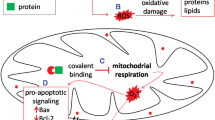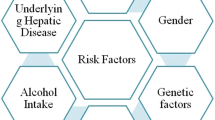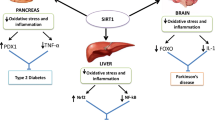Abstract
Cell stress transcribing genes provide a diverse platform of molecular mediators that vary in response to toxicity. Common drug-induced liver injury (DILI) biomarkers are usually expressed in mild toxicity and limited to confirming it rather than categorizing its intensity. Thus, new parametric biomarkers are needed to be explored. Classifying the toxicological response based on the dose-level and severity of stimuli will aid in the evaluation and approach against drug exposure. The present research explored the involvement of gene expression of potential biomarkers as a severity-specific hallmark in different acetaminophen (APAP)-induced hepatotoxicity levels in C57BL/6 mice. The differentially expressed genes were annotated and analyzed using bioinformatics tools to predict canonical pathways altered by DILI. The results revealed alteration in genes encoding for antioxidant enhancement; Slc7a11, bile efflux; MDR4, fatty acid metabolism and transcriptional factors namely Srebf1 and Pparα. Potential APAP toxicity biomarkers included Adh1 and thrombin, and other DNA damage and stress chaperones which were changed at least fourfold between control and the three tested severity models. The current investigation demonstrates a dose-mediated association of several hallmark genes in APAP-induced liver damage and addressed the involvement of uncommonly studied molecular responses. Such biomarkers can be further developed into predictive models, translated for risk assessment against drug exposure and guide in building theragnostic targets.






Similar content being viewed by others
Data availability
The datasets generated and/or analyzed during the current study are available at request from the corresponding author.
References
Qinna NA, Ghanim BY (2019) Chemical induction of hepatic apoptosis in rodents. J Appl Toxicol 7:178–190. https://doi.org/10.1002/jat.3740
Maher JM, Dieter MZ, Aleksunes LM, Slitt AL, Guo G, Tanaka Y, Scheffer GL, Chan JY, Manautou JE, Chen Y, Dalton TP, Yamamoto M, Klaassen CD (2007) Oxidative and electrophilic stress induces multidrug resistance-associated protein transporters via the nuclear factor-E2-related factor-2 transcriptional pathway. Hepatology 46:1597–1610. https://doi.org/10.1002/hep.21831
Aleksunes LM, Slitt AL, Maher JM, Augustine LM, Manautou M (2008) Induction of Mrp3 and Mrp4 transporters during acetaminophen hepatotoxicity is dependent on Nrf2. Toxicol Appl Pharmacol 1:74–83. https://doi.org/10.1038/jid.2014.371
Elmore S (2007) Apoptosis: a review of programmed cell death. Toxicol Pathol 35:495–516. https://doi.org/10.1080/01926230701320337
Malhotra D, Portales-Casamar E, Singh A, Srivastava S, Arenillas D, Happel C, Shyr C, Wakabayashi N, Kensler TW, Wasserman WW, Biswal S, Singh A, Kensler TW, Arenillas D, Wakabayashi N, Srivastava S, Wasserman WW, Biswal S, Malhotra D, Shyr C, Portales-Casamar E (2010) Global mapping of binding sites for Nrf2 identifies novel targets in cell survival response through chip-seq profiling and network analysis. Nucleic Acids Res 38:5718–5734. https://doi.org/10.1093/nar/gkq212
Chen D, Tavana O, Chu B, Erber L, Chen Y, Baer R, Gu W (2017) NRF2 is a major target of ARF in p53-independent tumor suppression. Mol Cell 68:224-232.e4. https://doi.org/10.1016/j.molcel.2017.09.009
Jiang L, Kon N, Li T, Wang SJ, Su T, Hibshoosh H, Baer R, Gu W (2015) Ferroptosis as a p53-mediated activity during tumour suppression. Nature 520:57–62. https://doi.org/10.1038/nature14344
Vanlangenakker N, Vanden Berghe T, Vandenabeele P, Vanden Berghe T, Vandenabeele P (2012) Many stimuli pull the necrotic trigger, an overview. Cell Death Differ 19:75–86. https://doi.org/10.1038/cdd.2011.164
Song G, Ouyang G, Bao S (2005) The activation of Akt/PKB signaling pathway and cell survival. J Cell Mol Med 9:59–71. https://doi.org/10.1111/j.1582-4934.2005.tb00337.x
Wu KC, Cui JY, Klaassen CD (2011) Beneficial role of Nrf2 in regulating NADPH generation and consumption. Toxicol Sci 123:590–600. https://doi.org/10.1093/toxsci/kfr183
Cho YE, Im EJ, Moon PG, Mezey E, Song BJ, Baek MC (2017) Increased liver-specific proteins in circulating extracellular vesicles as potential biomarkers for drug- and alcohol-induced liver injury. PLoS ONE 12:1–23. https://doi.org/10.1371/journal.pone.0172463
Kim M, Yun JW, Shin K, Cho Y, Yang M, Nam KT, Lim KM (2017) Expression levels of GABA-A receptor subunit alpha 3, Gabra3 and lipoprotein lipase, Lpl are associated with the susceptibility to acetaminophen-induced hepatotoxicity. Biomol Therapeut 25:112–121. https://doi.org/10.4062/biomolther.2016.076
Shimano H, Horton JD, Shimomura I, Hammer RE, Brown MS, Goldstein JL (1997) Isoform 1c of sterol regulatory element binding protein is less active than isoform 1a in livers of transgenic mice and in cultured cells. J Clin Investig 99:846–854. https://doi.org/10.1172/JCI119248
Horton JD, Goldstein JL, Brown MS (2002) SREBPs: activators of the complete program of cholesterol and fatty acid synthesis in the liver. J Clin Investig 109:1125–1131. https://doi.org/10.1172/jci15593
Charbonnel B (2009) PPAR-α and PPAR-γ agonists for type 2 diabetes. Lancet 374:96–98. https://doi.org/10.1016/S0140-6736(09)61040-0
Gross B, Pawlak M, Lefebvre P, Staels B (2017) PPARs in obesity-induced T2DM, dyslipidaemia and NAFLD. Nat Rev Endocrinol 13:36–49. https://doi.org/10.1038/nrendo.2016.135
Beere HM (2004) “The stress of dying”: the role of heat shock proteins in the regulation of apoptosis. J Cell Sci 117:2641–2651. https://doi.org/10.1242/jcs.01284
Vazquez JH, Clemens MM, Allard FD, Yee EU, Kennon-McGill S, Mackintosh SG, Jaeschke H, Hambuchen MD, McGill MR (2020) Identification of serum biomarkers to distinguish hazardous and benign aminotransferase elevations. Toxicol Sci 173:244–254. https://doi.org/10.1093/toxsci/kfz222
Kopec AK, Luyendyk JP (2014) Coagulation in liver toxicity and disease: role of hepatocyte tissue factor. Thromb Res. https://doi.org/10.1016/j.thromres.2014.03.023.Coagulation
McGill MR, Williams CD, Xie Y, Ramachandran A, Jaeschke H (2012) Acetaminophen-induced liver injury in rats and mice: comparison of protein adducts, mitochondrial dysfunction, and oxidative stress in the mechanism of toxicity. Toxicol Appl Pharmacol 264:387–394. https://doi.org/10.1016/j.taap.2012.08.015
Harrill AH, Watkins PB, Su S, Ross PK, Harbourt DE, Stylianou IM, Boorman GA, Russo MW, Sackler RS, Harris SC, Smith PC, Tennant R, Bogue M, Paigen K, Harris C, Contractor T, Wiltshire T, Rusyn I, Threadgill DW (2009) Mouse population-guided resequencing reveals that variants in CD44 contribute to acetaminophen-induced liver injury in humans. Genome Res 19(9):1507–1515. https://doi.org/10.1101/gr.090241.108
Zhou HC, Wang H, Shi K, Li JM, Zong Y, Du R (2019) Hepatoprotective effect of baicalein against acetaminophen-induced acute liver injury in mice. Molecules 24:131. https://doi.org/10.3390/molecules24010131
Martin-Murphy BV, Kominsky DJ, Orlicky DJ, Donohue TM, Ju C (2013) Increased susceptibility of natural killer T-cell-deficient mice to acetaminophen-induced liver injury. Hepatology 57:1575–1584. https://doi.org/10.1002/hep.26134
Ghanim B, Ahmad M, Abdallah Q, Qatouseh L, Qinna N (2021) Modulation of NRF2/ARE pathway- and cell death-related genes during drug-induced liver injury. Hum Exp Toxicol. https://doi.org/10.1177/09603271211027947
Abu-Ajamieh RN, Ghanim BY, Gammoh OS, Qinna NA (2020) Hepatocyte apoptosis induction by acetaminophen through modulation of caspase/Bax pathway in mice. Int J Pharmacy Pharmaceut Sci 12
Parekh S, Ziegenhain C, Vieth B, Enard W, Hellmann I (2016) The impact of amplification on differential expression analyses by RNA-seq. Sci Rep 6:1–11. https://doi.org/10.1038/srep25533
Sandercock DA, Coe JE, Di Giminiani P, Edwards SA (2017) Determination of stable reference genes for RT-qPCR expression data in mechanistic pain studies on pig dorsal root ganglia and spinal cord. Res Vet Sci 114:493–501. https://doi.org/10.1016/j.rvsc.2017.09.025
Peng X, Wood CL, Blalock EM, Chen KC, Landfield PW, Stromberg AJ (2003) Statistical implications of pooling RNA samples for microarray experiments. BMC Bioinformatics 4:26. https://doi.org/10.1186/1471-2105-4-26
Assefa AT, Vandesompele J, Thas O (2020) On the utility of RNA sample pooling to optimize cost and statistical power in RNA sequencing experiments. BMC Genom 21:312. https://doi.org/10.1186/s12864-020-6721-y
Peng Y, Zhang HW, Cao WH, Mao Y, Cheng RC (2020) Exploration of the potential biomarkers of papillary thyroid cancer (Ptc) based on rt2 profiler pcr arrays and bioinformatics analysis. Cancer Manag Res 12:9235–9246. https://doi.org/10.2147/CMAR.S266473
Wang H, Rangaswamy S, Kodavati M, Mitra J, Guo W, Guerrero EN, Van Den Bosch L, Hegde ML (2019) RT2 PCR array screening reveals distinct perturbations in DNA damage response signaling in FUS-associated motor neuron disease. Mol Brain 12:103. https://doi.org/10.1186/s13041-019-0526-4
Hedgpeth B, Missall R, Bambaci A, Smolen M, Yavuz S, Cottrell J, Chu T, Chang SL (2019) A review of bioinformatics tools to understand acetaminophen-alcohol interaction. Medicines 6:79. https://doi.org/10.3390/medicines6030079
McGill MR, Jaeschke H (1865) Animal models of drug-induced liver injury. Biochim Biophys Acta Mol Basis Dis 2019:1031–1039. https://doi.org/10.1016/j.bbadis.2018.08.037
Zhang J, Xu L, Zhang L, Ying Z, Su W, Wang T (2014) Curcumin attenuates D-galactosamine/lipopolysaccharide—induced liver injury and mitochondrial dysfunction in mice 1–3. J Nutr. https://doi.org/10.3945/jn.114.193573.1211
Abdulrazzaq AM, Badr M, Gammoh O, Abu-Khalil AA, Ghanim BY, Alhussainy TM, Qinna NA (2019) Hepatoprotective actions of ascorbic acid, alpha lipoic acid and silymarin or their combination against acetaminophen-induced hepatotoxicity in rats. Medicina (B Aires) 55:181. https://doi.org/10.3390/medicina55050181
Arora P, Jadaun SS, Das P, Shalimar, Data SK (2019) Unusually low serum alkaline phosphatase activity in a patient with acute on chronic liver failure and hemolysis. Electron J Int Feder Clin Chem Laborat Med 30:99–105
Brown AT, Ou X, James LP, Jambhekar K, Pandey T, McCullough S, Chaudhuri S, Borrelli MJ (2012) Correlation of MRI findings to histology of acetaminophen toxicity in the mouse. Magn Reson Imaging 30:283–289. https://doi.org/10.1016/j.mri.2011.09.023
Krishna M (2017) Patterns of necrosis in liver disease. Clin Liver Dis 10:53–56. https://doi.org/10.1002/cld.653
P. Gill, S. Bhattacharyya, S. McCullough, L. Letzig, P.J. Mishra, C. Luo, H. Dweep, L. James, MicroRNA regulation of CYP 1A2, CYP3A4 and CYP2E1 expression in acetaminophen toxicity, Scientific Reports. 7 (2017). https://doi.org/10.1038/s41598-017-11811-y
Reichert MC, Lammert F (2018) ABCB4 gene aberrations in human liver disease: an evolving spectrum. Semin Liver Dis 38:299–307. https://doi.org/10.1055/s-0038-1667299
Shan X, Miao Y, Fan R, Song C, Wu G, Wan Z, Zhu J, Sun G, Zha W, Mu X, Zhou G, Chen Y (2013) Suppression of Grb2 expression improved hepatic steatosis, oxidative stress, and apoptosis induced by palmitic acid in vitro partly through insulin signaling alteration. In Vitro Cell Dev Biol Anim 49:576–582. https://doi.org/10.1007/s11626-013-9646-9
Patterson AD, Shah YM, Matsubara T, Krausz KW, Gonzalez FJ (2012) Peroxisome proliferator-activated receptor alpha induction of uncoupling protein 2 protects against acetaminophen-induced liver toxicity. Hepatology 56:281–290. https://doi.org/10.1002/hep.25645
Rivera P, Pastor A, Arrabal S, Decara J, Vargas A, Sánchez-Marín L, Pavón FJ, Serrano A, Bautista D, Boronat A, de la Torre R, Baixeras E, Lucena MI, de Fonseca FR, Suárez J (2017) Acetaminophen-induced liver injury alters the Acyl ethanolamine-based anti-inflammatory signaling system in liver. Front Pharmacol 8:705. https://doi.org/10.3389/fphar.2017.00705
Mehendale HM (2000) PPAR-α: a key to the mechanism of hepatoprotection by clofibrate. Toxicol Sci 57:187–190. https://doi.org/10.1093/toxsci/57.2.187
Donepudi AC, Smith GJ, Aladelokun O, Lee Y, Toro SJ, Pfohl M, Slitt AL, Wang L, Lee J-Y, Schuetz JD, Manautou JE (2020) Lack of multidrug-resistance associated protein 4 prolongs partial hepatectomy-induced hepatic steatosis. Toxicol Sci. https://doi.org/10.1093/toxsci/kfaa032
Viswanathan P, Sharma Y, Gupta P, Gupta S (2018) Replicative stress and alterations in cell cycle checkpoint controls following acetaminophen hepatotoxicity restrict liver regeneration. Cell Prolif 51:1–14. https://doi.org/10.1111/cpr.12445
Giono LE, Resnick-Silverman L, Carvajal LA, St Clair S, Manfredi JJ (2017) Mdm2 promotes Cdc25C protein degradation and delays cell cycle progression through the G2/M phase. Oncogene 36:6762–6773. https://doi.org/10.1038/onc.2017.254
Sun J, Wen Y, Zhou Y, Jiang Y, Chen Y, Zhang H, Guan L, Yao X, Huang M, Bi H (2018) P53 attenuates acetaminophen-induced hepatotoxicity by regulating drug-metabolizing enzymes and transporter expression article. Cell Death Dis 9:1–12. https://doi.org/10.1038/s41419-018-0507-z
Stamper BD, Garcia ML, Nguyen DQ, Beyer RP, Bammler TK, Farin FM, Kavanagh TJ, Nelson SD (2015) P53 contributes to differentiating gene expression following exposure to acetaminophen and its less hepatotoxic regioisomer both in vitro and in vivo. Gene Regul Syst Biol 9:1–14. https://doi.org/10.4137/GRSB.S25388
Wang C, Yang J, Lu D, Fan Y, Zhao M, Li Z (2016) Oxidative stress-related DNA damage and homologous recombination repairing induced by N,N-dimethylformamide. J Appl Toxicol 36:936–945. https://doi.org/10.1002/jat.3226
Borude P, Bhushan B, Apte U (2018) DNA damage response regulates initiation of liver regeneration following acetaminophen overdose. Gene Expr 18:115–123. https://doi.org/10.3727/105221618X15205260749346
Li L, Zhang T, Zhou L, Xing G, Chen Y, Xin Y (2014) Schisandrin B attenuates acetaminophen-induced hepatic injury through heat-shock protein 27 and 70 in mice. J Gastroenterol Hepatol (Austr) 29:640–647. https://doi.org/10.1111/jgh.12425
Masubuchi Y, Bourdi M, Reilly TP, Graf MLM, George JW, Pohl LR (2003) Role of interleukin-6 in hepatic heat shock protein expression and protection against acetaminophen-induced liver disease. Biochem Biophys Res Commun 304:207–212. https://doi.org/10.1016/S0006-291X(03)00572-2
Sumioka I, Matsura T, Kai M, Yamada K (2004) Potential roles of hepatic heat shock protein 25 and 70i in protection of mice against acetaminophen-induced liver injury. Life Sci 74:2551–2561. https://doi.org/10.1016/j.lfs.2003.10.011
Levada K, Guldiken N, Zhang X, Vella G, Mo FR, James LP, Haybaeck J, Kessler SM, Kiemer AK, Ott T, Hartmann D, Hüser N, Ziol M, Trautwein C, Strnad P (2018) Hsp72 protects against liver injury via attenuation of hepatocellular death, oxidative stress, and JNK signaling. J Hepatol 68:996–1005. https://doi.org/10.1016/j.jhep.2018.01.003
Sun X, Ou Z, Chen R, Niu X, Chen D, Kang R, Tang D (2016) Activation of the p62-Keap1-NRF2 pathway protects against ferroptosis in hepatocellular carcinoma cells. Hepatology 63:173–184. https://doi.org/10.1002/hep.28251
Huss S, Stellmacher C, Goltz D, Khlistunova I, Adam AC, Trebicka J, Kirfel J, Büttner R, Weiskirchen R (2013) Deficiency in four and one half LIM domain protein 2 (FHL2) aggravates liver fibrosis in mice. BMC Gastroenterol. https://doi.org/10.1186/1471-230X-13-8
Xia W-R, Fu W, Wang Q, Zhu X, Xing W-W, Wang M, Xu D-Q, Xu D-G (2017) Autophagy induced FHL2 upregulation promotes IL-6 production by activating the NF-κB pathway in mouse aortic endothelial cells after exposure to PM25. Int J Mol Sci. https://doi.org/10.3390/ijms18071484
Bi J, Zhang Q, Liang D, Xiong L, Wei H, Sun R, Tian Z (2014) T-cell Ig and ITIM domain regulates natural killer cell activation in murine acute viral hepatitis. Hepatology 59:1715–1725. https://doi.org/10.1002/hep.26968
Miyakawa K, Joshi N, Sullivan BP, Albee R, Brandenberger C, Jaeschke H, McGill MR, Scott MA, Ganey PE, Luyendyk JP, Roth RA (2015) Platelets and protease-activated receptor-4 contribute to acetaminophen-induced liver injury in mice. Blood 126:1835–1845. https://doi.org/10.1182/blood-2014-09-598656
Fischereder M, Jaffe JP (1994) Thrombocytopenia following acute acetaminophen. Am J Hematol 45:258–259. https://doi.org/10.1002/ajh.2830450313
Acknowledgements
This study was supported by grant (11/4/2019) from the Deanship of Scientific Research, University of Petra, Amman, Jordan.
Funding
This study was funded by the Deanship of Scientific Research, University of Petra, Amman, Jordan (Grant Number 11/4/2019).
Author information
Authors and Affiliations
Contributions
Authors' contributions: Conceptualization: BYG, NAQ; Methodology: BYG, MIA, NAQ; Formal analysis and investigation: BYG, AK, QMA, NAQ; Writing—original draft preparation: BYG; Writing—review and editing: BYG, AK, QMA, NAQ; Funding acquisition: NAQ; Resources: NAQ; Supervision: NAQ. All authors read and approved the final manuscript.
Corresponding author
Ethics declarations
Competing interest
The authors have no relevant financial or non-financial interests to disclose.
Ethical approval
The study protocol was reviewed and approved by the Ethical Committee approval number 2A-2–2019, University of Petra (Amman, Jordan).
Informed consent
Not applicable.
Consent to publish
Not applicable.
Additional information
Publisher's Note
Springer Nature remains neutral with regard to jurisdictional claims in published maps and institutional affiliations.
Rights and permissions
Springer Nature or its licensor (e.g. a society or other partner) holds exclusive rights to this article under a publishing agreement with the author(s) or other rightsholder(s); author self-archiving of the accepted manuscript version of this article is solely governed by the terms of such publishing agreement and applicable law.
About this article
Cite this article
Ghanim, B.Y., Ahmad, M., Abdallah, Q. et al. Transcriptional profiling of drug-induced liver injury biomarkers: association of hepatic Srebf1/Pparα signaling and crosstalk of thrombin, alcohol dehydrogenase, MDR and DNA damage regulators. Mol Cell Biochem 478, 1949–1960 (2023). https://doi.org/10.1007/s11010-022-04648-1
Received:
Accepted:
Published:
Issue Date:
DOI: https://doi.org/10.1007/s11010-022-04648-1




